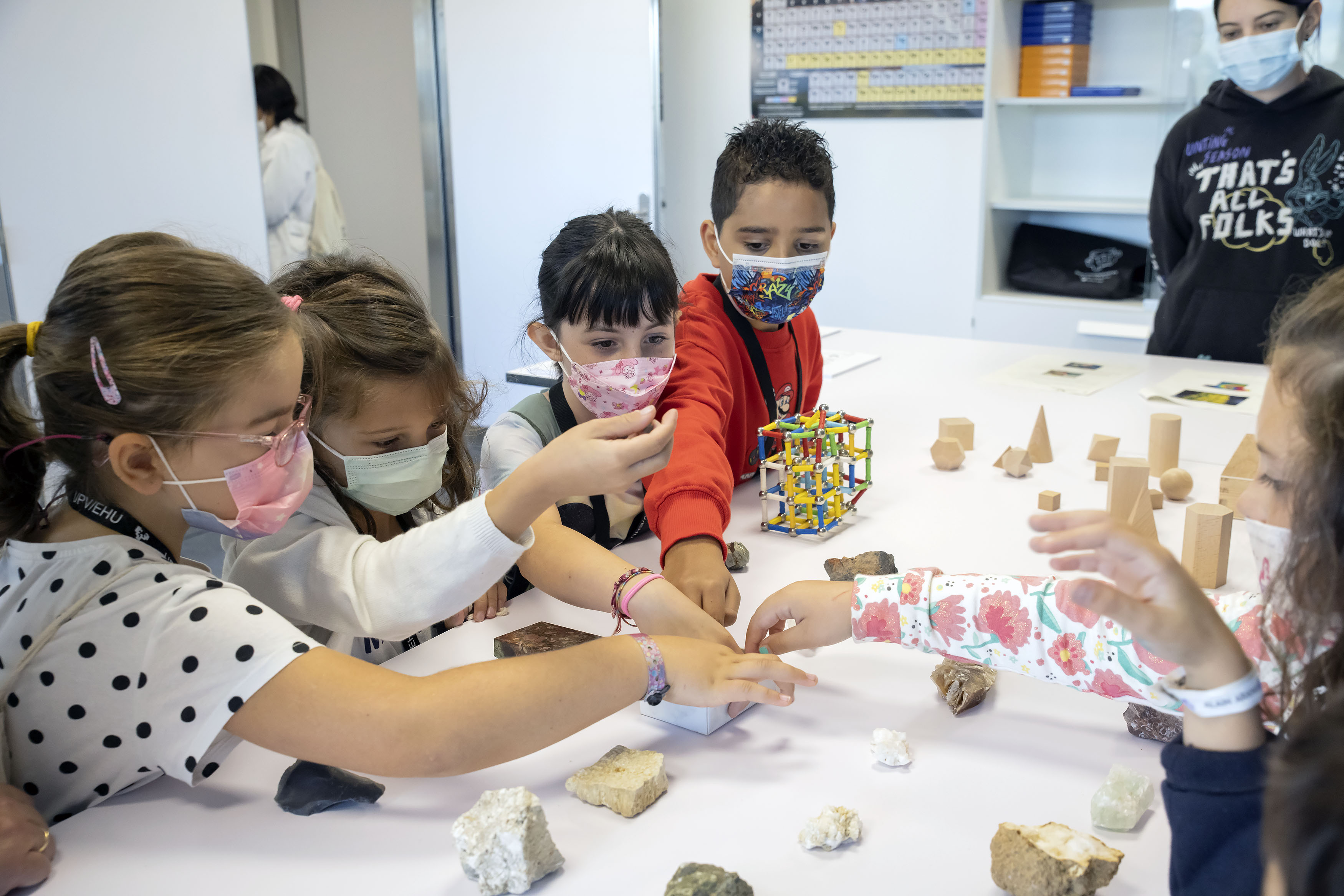Eskola SGIker in its third edition: awakening scientific vocations among elementary students at Leioa's Txomin Aresti school (02/11/2021))
First publication date: 02/11/2021

Six girls and three 7-year-old boys from the Txomin Aresti school in Leioa, together with their tutors Janire Álvaro and Raquel Sevillano, have participated in the four workshops organized by the General Research Services (SGIker) of the UPV / EHU on the 19th October in Leioa (Bizkaia Campus), in collaboration with the Department of Education and Participation of the Leioa City Council. The workshops are part of the third edition of the Eskola Sgiker Program implemented since the 2018-2019 academic year within the STEM (Science, Technology, Engineering and Mathematics) activities, aimed at awakening the interest of the smallest towards scientific activity, and that it has had a special echo in the local media and on the web.
The workshops have been held in the Martina Casiano building, and have been given by the technical staff of the Nuclear Magnetic Resonance Services, Molecules and Materials X-rays, Bizkaia Animal Facility and Phytotron and Greenhouse. After being received by the director of the SGIker, Itziar Alkorta, in the hall of the building, the girls and boys, expectant and excited, with their corresponding identification cards, bags and their notebooks to write down, went first to the workshop given by the Sgiker coordinator, Iñaki Echevarria. There they learned the changes in the state of matter as a function of temperature and color composition, creating fun glycerin soaps themselves.
While the soaps took their final shape, they went to the laboratory to observe, through the microscope, objects of daily life such as salt and sugar, by the hand of doctors Aitor Larrañaga and Leyre San Felices, checking for themselves how matter is ordered.
In the third workshop, led by doctors Maribel Collado and Azucena González, they explained the concept of chromatography in an entertaining and very practical way, getting to tune their own t-shirts with different shapes and colors, thus stimulating their creativity and using chemistry at their service. of fashion.
After the lunch to regain strength, the students of the Txomin Aresti School, verified in a very graphic way how animals live in a laboratory and the benefits of its use in the investigation of diseases of both humans and animals, and after the explanations of the doctor Arantza Alejo and the lawyer Susana Marquínez were able themselves to mount some cages for their accommodation. In addition, they were told the story with which Maite Fuentes won the Children's Story Contest of the Spanish Society for Laboratory Animal Sciences (SECAL) in its 2017 edition: “The History of Mussi. The importance of being a laboratory animal ”. With great attention, the group of schoolchildren understood the importance and necessity of experimenting with animals for the advancement of science.
From the questions they asked and their expressive faces, it can be said that they liked the experiments carried out and understood much more than was previously supposed. It should be noted how at all times and despite their young age, the students of the Txomin Aresti school in Leioa were very active, attentive when taking their notes and participating with questions and doubts about the experiments and their results.
